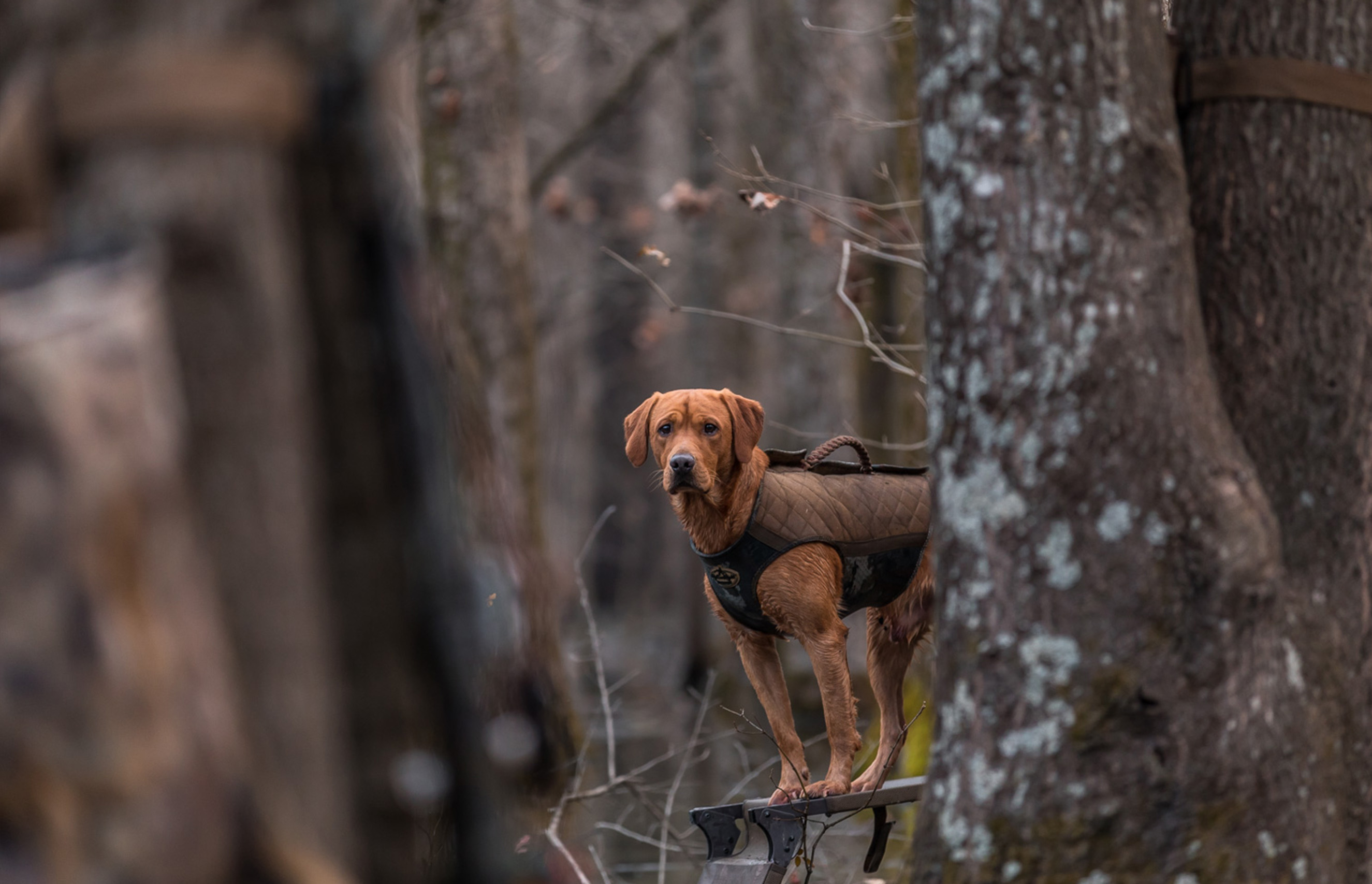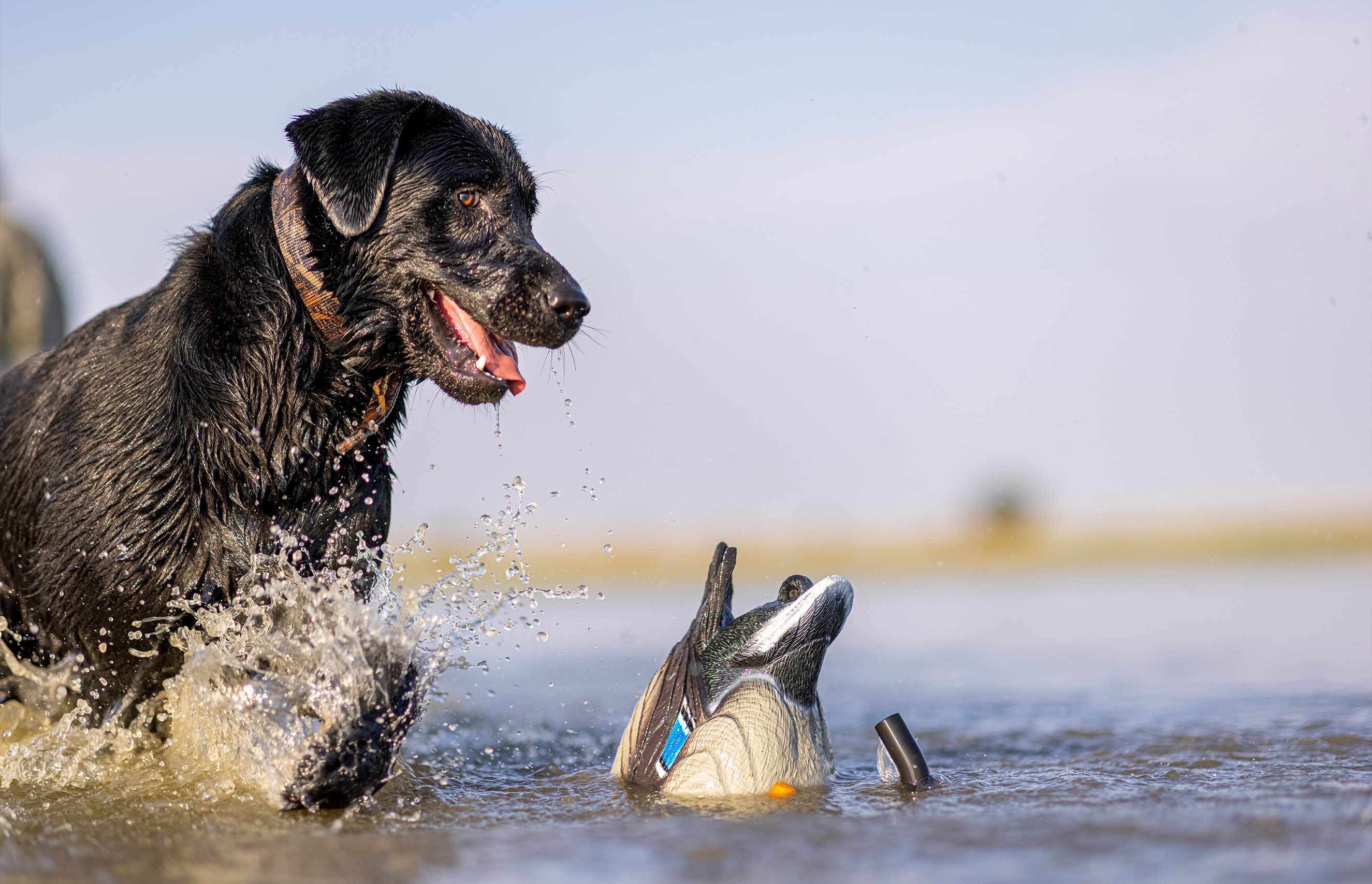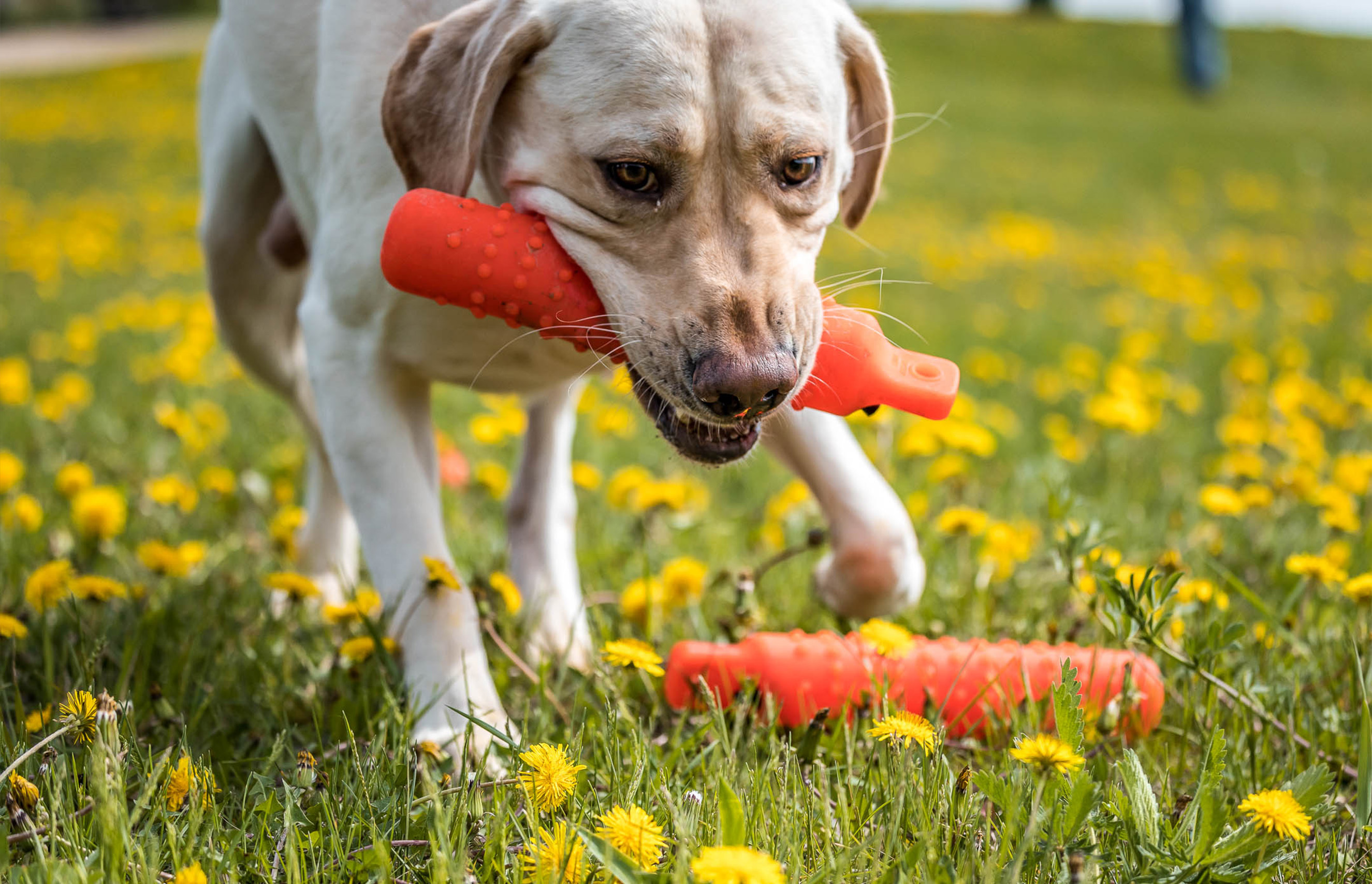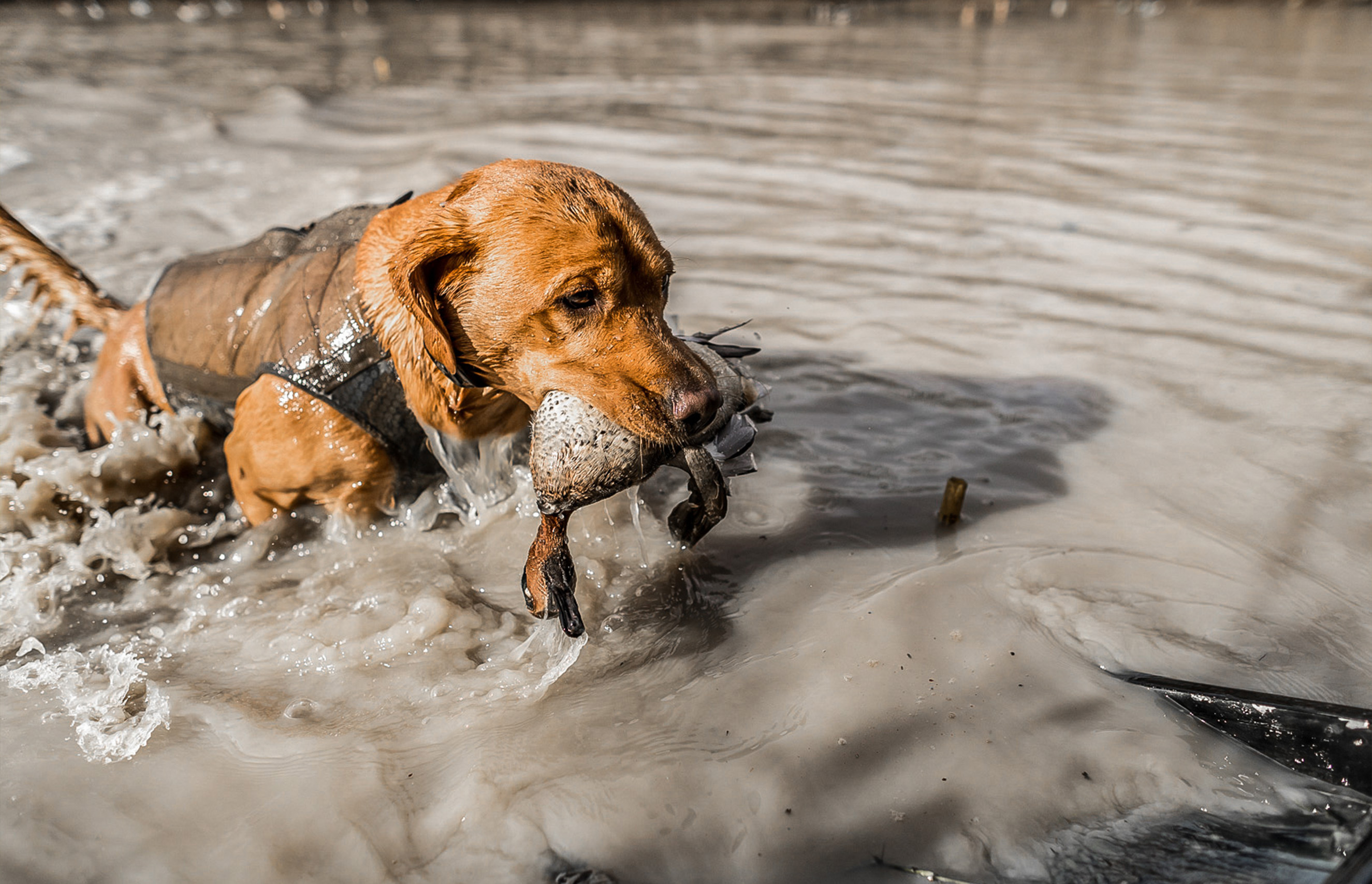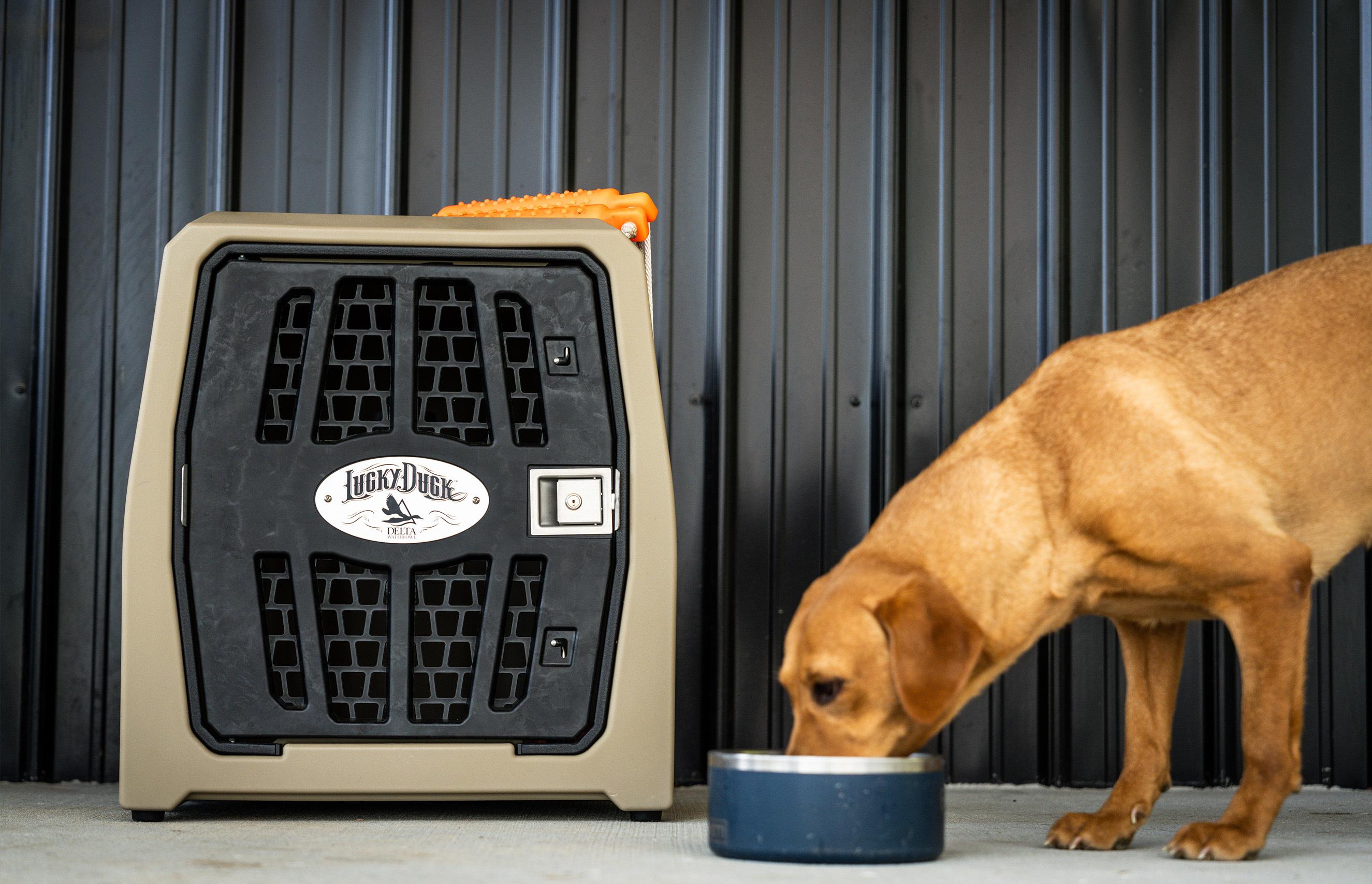The Duck Dog Gear Guide: Equipment for Performance and Safety
Posted by Lucky Duck Team on Jun 27th 2025
Why Your Duck Dog Deserves Professional-Grade Gear
A dedicated duck dog is more than a pet; they are athletes, partners, and add a great deal of excitement and joy to a hunt. These canine professionals operate in some of the harshest conditions imaginable, repeatedly plunging into icy water and navigating treacherous terrain. Just as a hunter invests in a reliable shotgun and quality waders, providing your four-legged partner with professional-grade gear is a non-negotiable aspect of responsible and ethical hunting. This is about optimizing performance, preventing injury, and preserving the health and safety of your most valuable hunting asset. This guide provides a comprehensive overview of the essential equipment needed to outfit your duck dog for peak performance, season after season.
The Duck Dog Gear Checklist
Before we dive into the details, here is a checklist of some essential gear duck hunters should have for their canine partners. Use this as a quick reference for gearing up, packing for a trip, or identifying gaps in your current system.
Performance & Protection Gear
- __ Neoprene Vest
- __ Elevated Dog Stand or Platform
- __ Dog Blind or Camouflaged, Insulated Kennel Cover
- __ Protective Dog Booties
- __ Paw Wax/Conditioner
Safety & First Aid
- __ Canine-Specific First Aid Kit
- __ Styptic Powder
- __ Sterile Saline Wash
- __ Gauze Pads and Vet Wrap
- __ Dog-Safe Antiseptic Wipes
- __ Forceps or Tweezers
- __ GPS Tracking Collar
- __ Emergency Vet Contact Information
- __ Towel
Field Operations & Communication
- __ Whistle
- __ Backup Whistle
- __ E-Collar System And Any Accessories
Travel & Transport
- __ Crash-Tested Travel Kennel
- __ Secure Tie-Down Straps
- __ Kennel Pad or Familiar Bedding
Nutrition & Hydration
- __ Fresh Water from Home
- __ Collapsible Water Bowl
- __ High-Performance Dog Food
- __ In-Field Snacks or Energy Supplements
Off-Season Training & Conditioning
- __ Training Bumpers/Dummies
- __ Check Cord
- __ Blank Pistol
Understanding Your Duck Dog's Unique Needs
Before purchasing gear, you must understand the physiological challenges your dog faces. A systematic approach begins with appreciating the science, breed characteristics, and environmental factors that dictate your dog's requirements.
The Science Behind Canine Performance in Cold Water
A dog submerged in cold water loses body heat primarily through conduction, which is 25 times faster than heat loss in cold air. To combat this, a dog's body initiates physiological responses like vasoconstriction (narrowing blood vessels to reduce heat loss from the core) and shivering. While effective, these processes burn immense amounts of energy. Proper gear, particularly a neoprene vest, provides critical insulation, allowing the dog to conserve that energy for what matters most: retrieving birds.
Breed-Specific Considerations for Gear Selection
Not all retrievers are created equal in terms of cold tolerance. While all breeds benefit from gear in harsh conditions, a less insulated breed may require a protective vest sooner or in milder temperatures to perform at the same level as a more naturally equipped dog. Prep accordingly.
How Weather Conditions Impact Your Dog's Gear Requirements
The number on the thermometer is only part of the story. A 40°F day with high winds and driving rain is far more dangerous than a calm, sunny 30°F day. Consider the "trifecta of cold": water temperature, air temperature, and wind chill. These factors work together to strip heat from your dog. A responsible hunter assesses the complete environmental picture to make informed decisions about gear deployment and hunt duration.
Pre-Season Preparation and Training Gear
The work of outfitting your dog begins long before opening day. The off-season is the critical time to condition your athlete(s) and ensure they are comfortable and familiar with their equipment.
Essential Training Equipment for Off-Season Conditioning
Off-season conditioning maintains muscle tone and retrieving drive. Your core training kit should include a variety of bumpers and dummies for marking and retrieving drills, a check cord for reinforcing obedience, a reliable whistle for distance commands, and a starter pistol to simulate gunfire and maintain steadiness. Consistent training builds not only skill but also the endurance needed for long days in the marsh.
Building Your Dog's Gear Tolerance and Familiarity
The first time your dog wears a neoprene vest or booties should not be in the excitement of a pre-dawn hunt. Introduce all new gear in positive, low-stress sessions at home or during fun training drills. Allow the dog to wear the vest, walk in booties, or get used to a new dog blind in a controlled environment. This process goes a long way to ensure that the gear feels like a normal part of the day rather than a distraction during a hunt.
Seasonal Gear Rotation and Storage Best Practices
Proper gear care extends its life and ensures it performs when needed. At the end of the season, thoroughly clean and dry all equipment. Neoprene should be rinsed with fresh water, dried, and stored flat or on a wide hanger to prevent permanent creases. E-collars should have their batteries removed, and contact points cleaned. Store all gear in a climate-controlled, rodent-free environment to prevent degradation.
Protection and Performance Gear
This category of gear directly enhances your dog's ability to do its job comfortably and safely, allowing it to perform at a higher level for longer.
Neoprene Vests: Science, Fit, and Feature Comparison
A neoprene vest is arguably the most important piece of performance gear. It works as a barrier between your dog's body and the cold water, which is then warmed by body heat, creating an effective insulating barrier. A snug, athletic fit is crucial; a loose vest leaves room for cold water to flow in and out, leaving not much difference between wearing the vest, and not. When comparing vests, look for durable stitching, integrated flotation for added buoyancy, a strong grab handle for lifting the dog into a boat or blind, and secure D-rings for leash attachment.
Protective Booties and Paw Care Solutions
On extreme days, a dog's paws are subjected to extreme abuse from sharp ice, abrasive rocks, and prolonged exposure to cold water. Protective booties can prevent cuts and abrasions. For less extreme conditions, a high-quality paw wax can provide a protective barrier and help prevent ice balls from forming between the toes. Regularly inspecting paws after every hunt is a critical part of routine care.
Hearing Damage
Give some thought to having your dog some yards away from you. Hearing protection solutions for dogs simply aren’t the same as for humans, but as with all damaging forces, you can either increase the distance from the force or increase the shielding. Since shielding is difficult (you can consult your dog’s vet about cotton in their ears), the other option is increasing the distance from your shotgun blast. Hearing damage is cumulative, so any effort you take will help over time.
Transportation and Travel Systems
Getting your dog to and from the hunt safely is as important as the hunt itself. A dedicated and secure travel system is the mark of a professional.
Kennel Selection: Safety Standards and Features
Your dog's travel kennel should be viewed as a piece of safety equipment, not just a container. When it comes to safety, investing in a high-quality, crash-tested kennel is paramount. Lucky Kennels are engineered for this exact purpose, earning a 5-Star Crash Test Rating from the Center for Pet Safety for their proven ability to protect your dog in the event of a vehicle accident. These kennels are designed to withstand significant impacts, giving you peace of mind during transit. Ensure the kennel is properly sized, as well; we recommend sizing up if the kennel is only for in-home use.
Vehicle Setup for Multi-Dog Transport
Securely fasten all kennels in your vehicle using heavy-duty tie-down straps, not weak bungee cords. If kennels are in the bed of a truck, you’ll need to protect them from the elements. Ensure adequate airflow, especially in warmer weather, and of course, never leave dogs in a vehicle on a hot day.
Hotel and Lodging Strategies with Hunting Dogs
When traveling, confirm the hotel's pet policy in advance. To minimize stress, bring your dog's familiar kennel and bedding from home. Maintain their feeding and exercise routine as much as possible. Be a courteous guest by keeping your dog quiet and never leaving them unattended in the room.
Budget-Conscious Gear Strategies
Outfitting a duck dog can be expensive, but a smart, budget-conscious approach can help you acquire quality gear without breaking the bank.
Essential vs. Optional Equipment Priority Matrix
Prioritize your purchases. Non-negotiable essentials come first: a quality neoprene vest and a comprehensive first-aid kit. High-importance items follow: a reliable e-collar and a safe travel kennel. Optional gear like booties or eye protection can be acquired later as your budget allows.
DIY Solutions and Modifications
For the handy hunter, there are many opportunities for DIY solutions. You can build your own dog stand from wood or PVC, create training bumpers from canvas and rope until you can afford high-quality options, or try to modify an existing kennel with better insulation.
Timing Your Purchases for Maximum Value
The best time to buy hunting gear is usually in the off-season. Look for sales during the spring and summer months when demand is lowest. This can often save you money on premium equipment.
Investing in Your Dog's Success and Longevity
Outfitting your duck dog(s) with professional-grade gear is an expression of respect for his effort and dedication. It is a direct investment in their safety, comfort, and ability to perform at the highest level. On the whole, a well-equipped, well-cared-for dog should have more energy, retrieve more birds, and hunt effectively for more seasons. By building a complete and reliable gear system, you are not just buying equipment; you are ensuring a long and successful partnership with your most loyal companion in the marsh.
Invest in your dog’s future today: explore our crash-rated Lucky Kennels!

